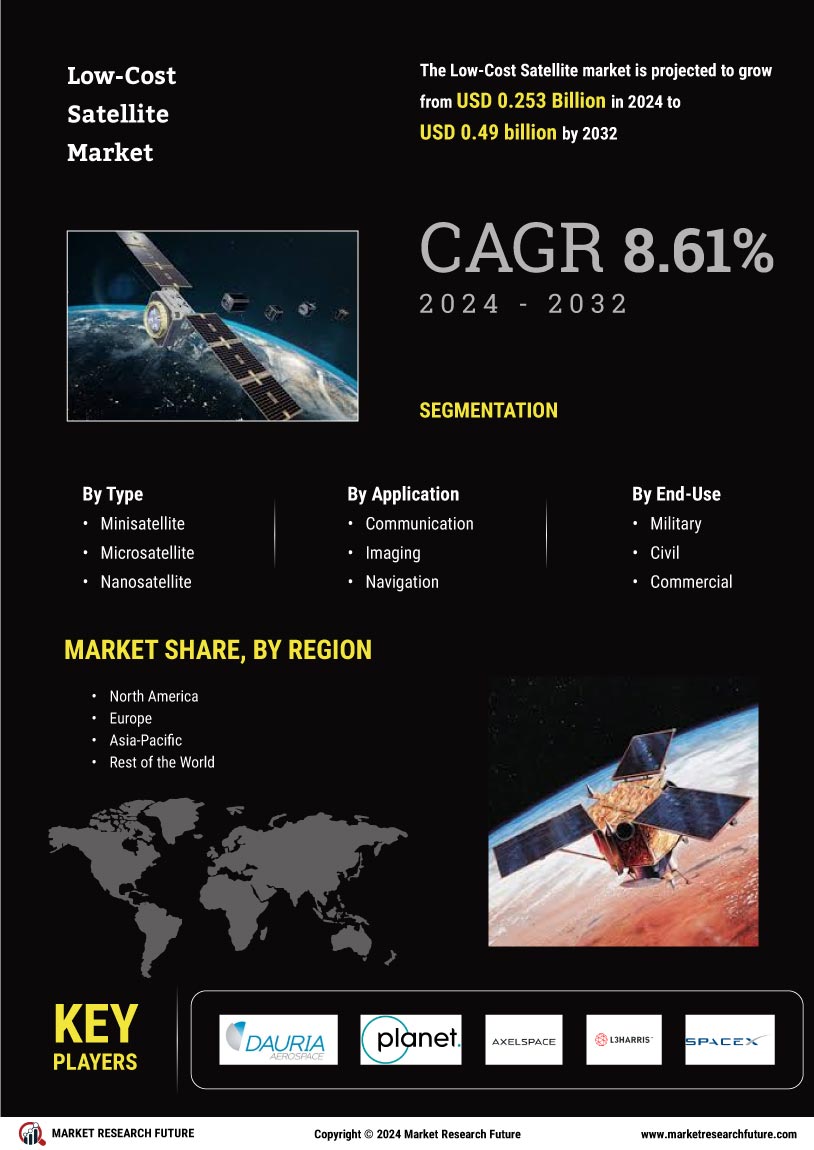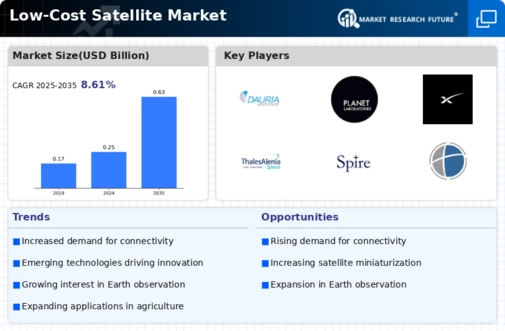The top market players are extensively investing in R&D to increase their product lines, which will aid in the growth of the Low-Cost Satellite Market. Significant market developments include new product releases, contractual agreements, mergers and acquisitions, increased investments, and collaboration with other organizations. The Low-Cost Satellite Market sector must produce cost-effective products to flourish and thrive in a more competitive and expanding market climate.
Manufacturing locally to decrease operational costs is a fundamental business approach manufacturers utilize in the global Low-Cost Satellite industry to serve clients and expand the market sector. Some of the most substantial gains have recently come from the Low-Cost Satellite Market sector. Major players in the Low-Cost Satellite Market, including Dauria Aerospace (Russia), Planet Labs Inc. (US), Axelspace Corporation (Japan), L3Harris Technologies Inc. (US), SpaceX (US), Thales Alenia Space (France), and others, are trying to surge market demand by spending in research and development operations.
Raytheon's subsidiary Blue Canyon Technologies has been developing turnkey small satellite solutions for several years, including CubeSats and microsatellites. Based on its high-performance attitude determination and control components, the company specializes in precision pointing platforms. A high-performance, highly reliable, low-cost spacecraft system or component developed by BCT will be used for academic, commercial, or government missions. The company's cutting-edge spacecraft and subsystems enable LEO, GEO, Lunar, and interplanetary missions.
BCT has supported missions for the United States Air Force, NASA, the Defense Advanced Research Projects Agency (DARPA), and many others, as well as providing Attitude Control Systems for the first interplanetary CubeSats that successfully traveled to Mars. The company has received numerous honors, including Inc Magazine's 5000 Fastest Growing Private Companies, 2017 Colorado Companies to Watch, 2019 Best in Biz, the 2019 Colorado Biz Made in Colorado Emerging Manufacturer Winner, and the 2020 Tibbetts Award. In November 2020, Blue Canyon Technologies Inc, which provides small satellites, announced the signing of a contract for the acquisition by Raytheon Technologies.
This company provides astounding aerospace and defense systems and services to the Government, military, and private sector commercial dealings globally.
Thales Alenia Space provides cost-effective solutions for telecommunications, navigation, Earth observation, environmental management, exploration, science, and orbital infrastructures based on over 40 years of experience and a unique blend of talents, expertise, and cultures. Thales Alenia Space is trusted by governments and commercial sectors alike to design satellite-based technologies that enable anytime, anywhere connectivity and navigation, monitor our planet, improve resource management, and explore the company's Solar System and beyond. Thales Alenia Space sees space as a new horizon that can be used to help construct a better, more sustainable world. In addition to its joint venture with Thales (67%) and Leonardo (33%), Thales Alenia Space cooperates with Telespazio to establish its Space Alliance, which provides full-range services. Thales Alenia Space had consolidated revenues of around 2.2 billion euros in 2022 and employed approximately 8,500 people. The company operates in ten countries, with 17 locations in Europe and one in the United States. Thales Alenia Space merged in collaboration with Hemera in June 2019 for the collaborative development of the advanced nanosatellite arena and delivered the dedicated antennas, payload, and ground segment.


















Leave a Comment